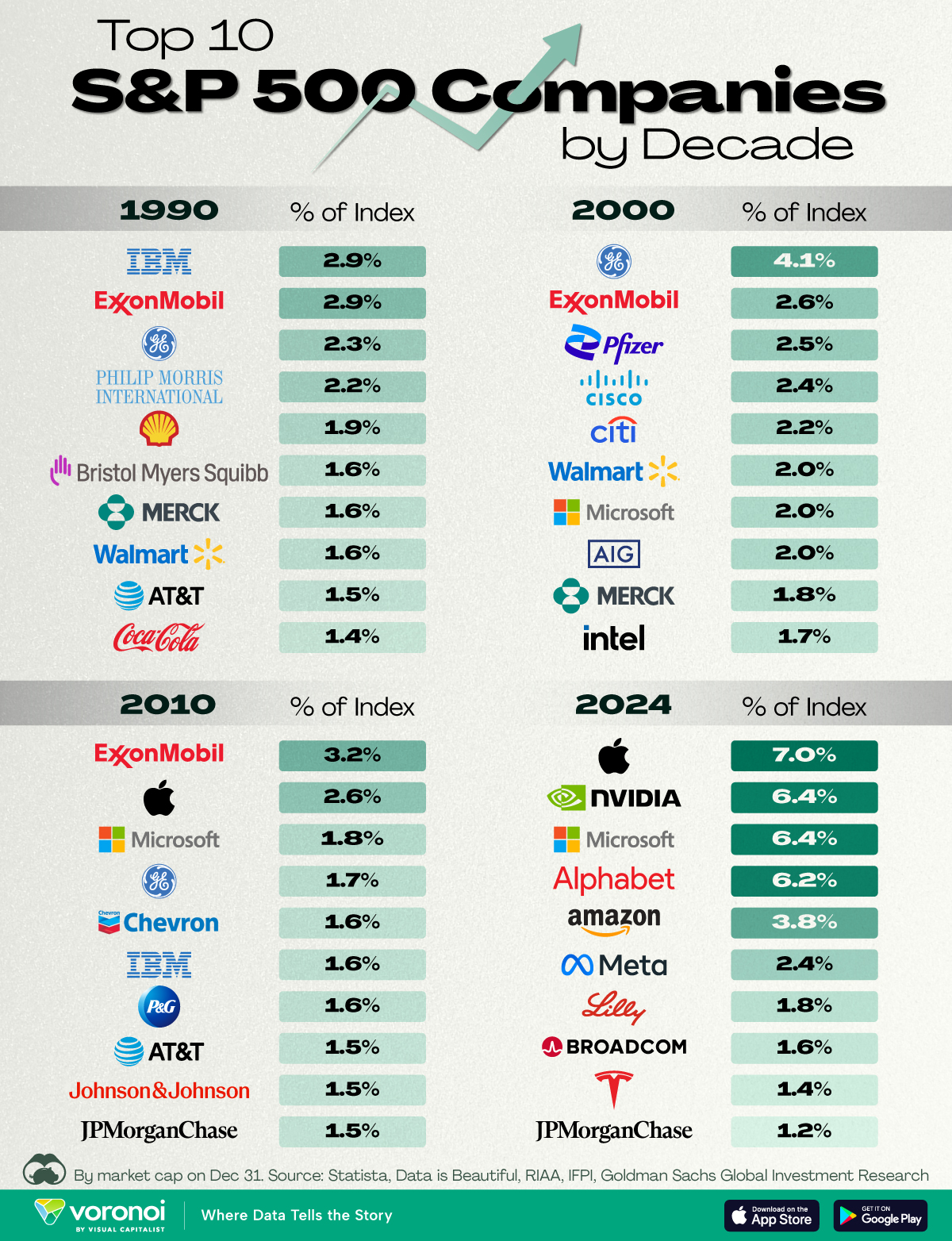
Most people think they can just put all of their money in an S&P 500 index fund and not worry about concentration risk. After all, you're investing in 500 companies right?It isn't as straight forward as that, the S&P 500 is a lot more concentrated than people think.
As of 12/31/2024, the top 10 holdings of the S&P 500 made up ~40% of the entire index—and most of them are in Technology.

• QQQ (Nasdaq 100 ETF) → Top 10 = ~51%, Top 5 = ~37%
• VUG (Vanguard Growth ETF) → Top 10 = ~59.3%, Top 5 = ~44.2%
These three—S&P 500, QQQ, and VUG—share 9 of the same top 10 holdings. If you own all three, your portfolio may be far more exposed to the same few names than you realize.
For many investors, nearly half their investable assets are tied up in several highly correlated stocks: Apple, NVIDIA, Amazon, Tesla, Microsoft, Meta, Broadcom, etc.
Yes, they’ve crushed it over the last decade. But history tells us: market leadership is never permanent.
• 1990: 3rd largest in the S&P 500
• 2000: #1 largest
• 2010: Still in the top 5
Then?
• 2017: –44.8%
• 2018: –56.6%
• Removed from the Dow
• From 2007 to 2022: GE lost 80.68%
Market concentration is a real risk. A well-built portfolio spreads exposure not just across stocks, but also across sectors, countries, and economies. Diversification isn’t about avoiding risk — it’s about managing it smartly. Because the leaders today may not be the leaders tomorrow.
Choosing to retire is one of the most important decisions someone can make in their lifetime. Read this article to learn about all the things you should consider prior to making this life-changing decision.
Stock pickers underperform the market long-term. Learn why diversification and disciplined investing still win.
Are you a tech employee with an equity compensation plan? If you want to learn more details about RSUs, ISOs, NSOs, & ESPPs, take a look at this article.